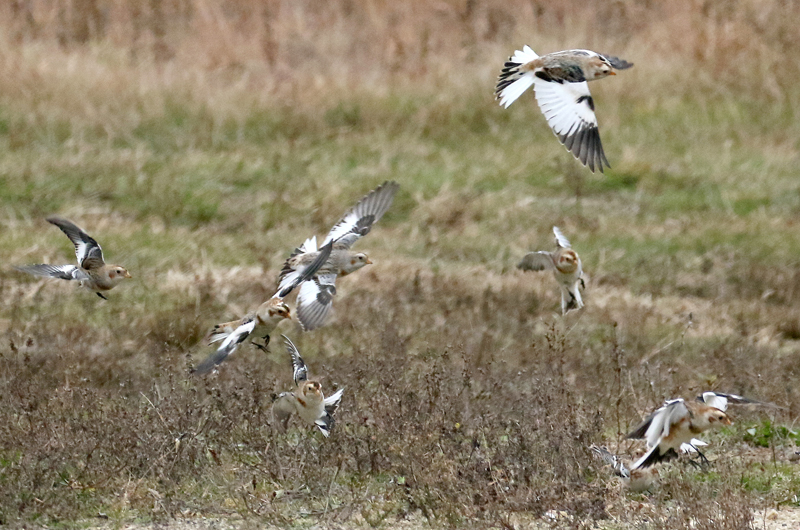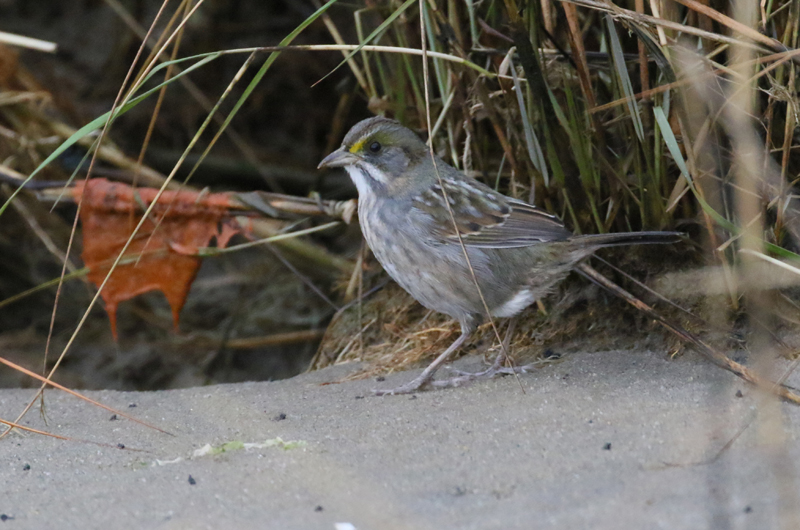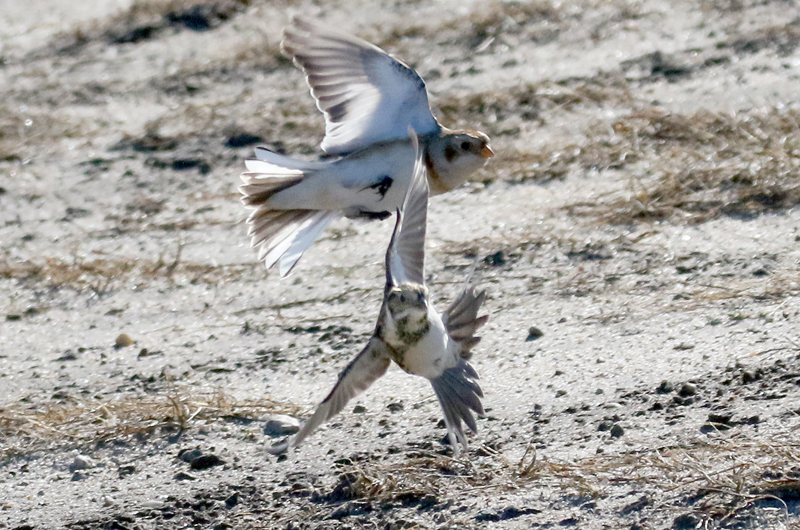Many autumnal columns feature sightings in Aquinnah. But this week Katama is the clear winner, with three unusual species. Far and away the most unusual species this week is the white-winged dove. It looks a lot like a mourning dove, but in flight it shows a conspicuous band of white across its wings.
So when Rebecca Sanders, the garden manager at the Farm Institute, spotted a dove with a “brilliant patch of white visible across its wings,” she consulted her field guide and identified it as a white-winged dove. She found the dove while working in the friendship garden at The Farm Institute on Nov. 25.
Ms. Sanders recognized the bird as unusual, as the range map in her field guide showed that most white-winged doves live in the southwestern part of the country. She emailed me (at birds@mvgazette.com), and I immediately notified several birders who would try to find the dove the next day; to confirm the sighting we needed either a second person to see it or a photograph, preferably both.
On Nov. 26, Ken Magnuson, Warren Woessner, Lanny McDowell, Pete Gilmore and Rebecca Sanders searched for and found the dove with a flock of mourning doves. Ms. Sanders later saw the bird again that afternoon when it was near a greenhouse. On the morning of Nov. 27, I found the bird after searching for two hours; it was with a flock of seven mourning doves that flew past me and across the fields from the Mattakessett Condominiums to the cattle pasture west of the barn. The white on the wings of the flying dove is conspicuous.
Susan Whiting reports that this is the fifth recording for this species on Martha’s Vineyard. The first sighting was in 1993, by Edo and Robert Potter on Chappaquiddick. Matt Pelikan found one in Edgartown in 2000, and there was one at Ms. Whiting’s feeder in May 2004. Mr. and Mrs. Potter also hosted the fourth sighting, in October 2004. The website ebird.org shows about 15 sightings in southeastern Massachusetts since 2000.
Another unusual sighting was a seaside sparrow spotted by Mr. McDowell in the salt marsh at the Katama end of Norton Point Beach on Nov. 24. The next day Mr. McDowell, Mr. Gilmore and Mr. Woessner found two of them in the same area. This fairly dark sparrow, a salt marsh specialist, is observed maybe a couple of times a decade. It is supposedly a year-round resident along the Atlantic Coast south to Florida, however, it is rare and very locally distributed in Massachusetts.
The third rarity, a Lapland longspur, is a species of the beaches and open fields. It is often observed as a single bird in a flock of snow buntings. On Nov. 22, Mr. McDowell found one of them in a flock of about 30 snow buntings in the parking lot just north of the Mattakesett Herring Creek near the Right Fork of South Beach. Mr. McDowell observed a different individual on Nov. 26 in the same location, also with the snow buntings. The longspurs appear mostly dark, contrasting to the generally light-colored buntings.
With all this birding attention focused on Katama, it is somewhat surprising that more species have not been observed. During my searching for the white-winged dove I also found a palm warbler, two killdeer, three black-bellied plovers, a northern harrier, a red-tailed hawk and a flock containing 80 horned larks and two snow buntings.
In other birding news, Sioux Eagle finally got her wish as a male bobwhite visited her feeder on Nov. 27. Dan Bradley observed Carolina wrens, a Cooper’s hawk and both white breasted and red-breasted nuthatches at his feeder. And Holly Mercier, Diane Crane, Mr. Bradley and Jo-Ann Eccher all noted that dark-eyed juncos have appeared at their Edgartown, Vineyard Haven and Aquinnah feeders this week. Jeff Bernier observed a brown creeper at Cranberry Acres on Nov. 23. And Susan Whiting observed a field sparrow at her feeder on Nov. 22 and the yellow-breasted chat that is still hanging out at the Edgartown Golf Club as of Nov. 28.
On the waterbird front, Maura Fitzgerald and Allen Carney spotted a great blue heron and a snowy egret wading in the waters of the West Basin on Nov. 24. While great blues are here for the winter, it is getting to be a late date for the snowy egret. And Bob Shriber found 15 harlequin ducks from the Squibnocket Beach parking lot on Nov. 24.
Finally, not all is cut and dried in the birding world. On Nov. 12, I spotted three presumed domestic geese that looked remarkably like overweight graylag geese at the Head of the Lagoon. Ken Magnuson spotted them the next day, and John Nelson found them again on Nov. 27. Graylags are wild in Iceland and Europe but they have been domesticated. If these are wild birds, the sighting would be truly amazing. The website ebird only reports two occurrences in North America: single birds in Nova Scotia in November 2010 and another single bird near Montreal in November 2011 and again in April 2012. Could these three be wild geese? The timing of the sighting is consistent with other records.
Winter residents are arriving and rarities are still migrating through. Please look for them and report your sightings to birds@mvgazette.com.
Robert Culbert leads Guided Birding Tours and is an ecological consultant living in Vineyard Haven.










Comments
Comment policy »